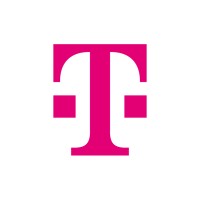Company Details
vivo-telefonicabr
37,866
1,503,344
517
vivo.com.br
0
VIV_1616504
In-progress

Vivo (Telefônica Brasil) Company CyberSecurity Posture
vivo.com.brVivo (Telefônica Brasil) is part of the Telefónica Group and with more than 94 million customers, of which 75 million mobile and 19 million fixed, we are the largest telecommunications company in Brazil, with nationwide presence and a complete, convergent portfolio of products, combining fixed, mobile and digital services. Our purpose is “Digitalize to Bring Closer”, helping to build a digital nation and transforming the life of our customers. More and more, we connect people and things with Fiber, 4G and 4.5G and cover more cities with the network quality that only Vivo has. Today, we cover around 90% of the population with 4G and are accelerating the launch of cities with 4.5G, using carrier aggregation technology. In the fixed operation, we ended 2019 with 21 million homes-passed (HPs) with fiber optic technology, of which 11 million HPs with FTTH (fiber to the home). In addition, all cities with FTTH technology also offer TV over fiber (IPTV), aiming to offer the best speed and experience to our consumers. At Vivo, we also do more than just telecommunications. Within the Group, we have the Telefônica Vivo Foundation, that is committed to making education a priority, developing projects that are based on human potential and use technology as an instrument in favor of inclusion and digital culture.
Company Details
vivo-telefonicabr
37,866
1,503,344
517
vivo.com.br
0
VIV_1616504
In-progress
Between 750 and 799

 V Global Score (TPRM)
V Global Score (TPRM)XXXX

Description: A cybercriminal known as Rey, part of the Hellcat ransomware operation, claims to have stolen 106GB of sensitive data from Telefónica in May 2025. The stolen data includes internal communications, purchase orders, logs, customer records, and various employee data. Rey has released a 2.6GB sample and is threatening to release the full batch unless a payment is made. Telefónica has downplayed the incident, stating that the data is old and there was no new breach.


No incidents recorded for Vivo (Telefônica Brasil) in 2025.
No incidents recorded for Vivo (Telefônica Brasil) in 2025.
No incidents recorded for Vivo (Telefônica Brasil) in 2025.
V cyber incidents detection timeline including parent company and subsidiaries

Vivo (Telefônica Brasil) is part of the Telefónica Group and with more than 94 million customers, of which 75 million mobile and 19 million fixed, we are the largest telecommunications company in Brazil, with nationwide presence and a complete, convergent portfolio of products, combining fixed, mobile and digital services. Our purpose is “Digitalize to Bring Closer”, helping to build a digital nation and transforming the life of our customers. More and more, we connect people and things with Fiber, 4G and 4.5G and cover more cities with the network quality that only Vivo has. Today, we cover around 90% of the population with 4G and are accelerating the launch of cities with 4.5G, using carrier aggregation technology. In the fixed operation, we ended 2019 with 21 million homes-passed (HPs) with fiber optic technology, of which 11 million HPs with FTTH (fiber to the home). In addition, all cities with FTTH technology also offer TV over fiber (IPTV), aiming to offer the best speed and experience to our consumers. At Vivo, we also do more than just telecommunications. Within the Group, we have the Telefônica Vivo Foundation, that is committed to making education a priority, developing projects that are based on human potential and use technology as an instrument in favor of inclusion and digital culture.

Make a new start. A start that will build beautiful relationships, shape millions of ideas. Enable a new way to live, learn, work and play. At Jio, we build products and services of the future to empower billions of Indians make their dreams a reality. Jio is about YOU. Join the movement to make I

Vodafone Idea Limited is an Aditya Birla Group and Vodafone Group partnership. It is India’s leading telecom service provider. The Company provides pan India Voice and Data services across 2G, 3G and 4G platform. With the large spectrum portfolio to support the growing demand for data and voice, the

Telkom Business is the business unit dedicated to serving businesses of every type, industry and size in and outside South Africa. The businesses that we serve range from small and medium enterprises (SMEs) to large corporations, government organisations and global enterprises. A sub-brand of the
🤝Ce qui fait notre singularité ? Chez Bouygues Telecom, nous croyons que les relations humaines sont un besoin vital. La qualité de nos relations avec notre famille, nos amis, ceux qui nous entourent est déterminante pour notre bien-être, notre santé et même notre espérance de vie. Ce sont ces rela
We believe it’s people who give purpose to our technology. So we’re committed to staying close to our customers and providing them the best experience. And delivering the best tech. On the best network. Because our purpose is to build a connected future so everyone can thrive. We build techno

ACN is the leading direct selling telecommunications and essential services provider. ACN Inc. was founded in 1993 by four entrepreneurs and is now operating in North America. ACN offers essential products and services that people use every day, while also offering a powerful business ownership oppo

The future of mobile isn’t on the horizon, it’s happening now. At Ericsson, we’re building the foundation for an open network ecosystem where industries, developers, and enterprises thrive. The convergence of 5G, AI, cloud, and network APIs isn’t just a technological shift; it’s a transformation th

T-Mobile US, Inc. (NASDAQ: TMUS) is America’s supercharged Un-carrier, delivering an advanced 4G LTE and transformative nationwide 5G network that will offer reliable connectivity for all. T-Mobile’s customers benefit from its unmatched combination of value and quality, unwavering obsession with off
Charter Communications, Inc. (NASDAQ: CHTR) is a leading broadband connectivity company and cable operator with services available to more than 57 million homes and businesses in 41 states through its Spectrum brand. Over an advanced communications network, the company offers a full range of state-o
.png)
Telefónica|Vivo has closed a BRL 3.8bn (€600m) Internet of Things contract with public sanitation services provider Sabesp, which will see...
Telefônica Brasil dominates Brazil's telecom market with rapid 5G expansion, strong financial growth, and an expanding fintech ecosystem.
Brazilian operator Vivo (Telefonica Brasil) has become Magalu's primary digital partner, connecting 700 of the retailer's stores across...
Brazil's Vivo (Telefonica Brasil) reported a net profit of BRL 1.1 billion in Q1 2025, marking an 18.1 percent increase compared to the same period last year.
Telefónica|Vivo has finalised its acquisition of Brazilian cloud services provider IPNET after receiving relevant regulatory approvals for...
The Banco Central do Brasil (Central Bank of Brazil) has granted Telefónica|Vivo a Sociedade de Crédito Direto (SCD) licence,...
The Group has reportedly restructured the Board of Directors at Telefónica Open Innovation, parent to corporate venture capital and...
Telefónica|Vivo is to continue branching out into new, non-telco sectors such as energy, finance, and health as a strategy to drive customer...
... • With more than twenty years of experience in cybersecurity, Ramos will strengthen Telefónica Tech's capabilities in the Americas,...

Explore insights on cybersecurity incidents, risk posture, and Rankiteo's assessments.
The official website of Vivo (Telefônica Brasil) is http://www.vivo.com.br.
According to Rankiteo, Vivo (Telefônica Brasil)’s AI-generated cybersecurity score is 796, reflecting their Fair security posture.
According to Rankiteo, Vivo (Telefônica Brasil) currently holds 0 security badges, indicating that no recognized compliance certifications are currently verified for the organization.
According to Rankiteo, Vivo (Telefônica Brasil) is not certified under SOC 2 Type 1.
According to Rankiteo, Vivo (Telefônica Brasil) does not hold a SOC 2 Type 2 certification.
According to Rankiteo, Vivo (Telefônica Brasil) is not listed as GDPR compliant.
According to Rankiteo, Vivo (Telefônica Brasil) does not currently maintain PCI DSS compliance.
According to Rankiteo, Vivo (Telefônica Brasil) is not compliant with HIPAA regulations.
According to Rankiteo,Vivo (Telefônica Brasil) is not certified under ISO 27001, indicating the absence of a formally recognized information security management framework.
Vivo (Telefônica Brasil) operates primarily in the Telecommunications industry.
Vivo (Telefônica Brasil) employs approximately 37,866 people worldwide.
Vivo (Telefônica Brasil) presently has no subsidiaries across any sectors.
Vivo (Telefônica Brasil)’s official LinkedIn profile has approximately 1,503,344 followers.
Vivo (Telefônica Brasil) is classified under the NAICS code 517, which corresponds to Telecommunications.
No, Vivo (Telefônica Brasil) does not have a profile on Crunchbase.
Yes, Vivo (Telefônica Brasil) maintains an official LinkedIn profile, which is actively utilized for branding and talent engagement, which can be accessed here: https://www.linkedin.com/company/vivo-telefonicabr.
As of November 27, 2025, Rankiteo reports that Vivo (Telefônica Brasil) has experienced 1 cybersecurity incidents.
Vivo (Telefônica Brasil) has an estimated 9,535 peer or competitor companies worldwide.
Incident Types: The types of cybersecurity incidents that have occurred include Ransomware.
Total Financial Loss: The total financial loss from these incidents is estimated to be $0.
Detection and Response: The company detects and responds to cybersecurity incidents through an incident response plan activated with null, and third party assistance with null, and law enforcement notified with null, and containment measures with null, and remediation measures with null, and recovery measures with null, and communication strategy with null, and adaptive behavioral waf with null, and on demand scrubbing services with null, and network segmentation with null, and enhanced monitoring with null..
Title: Telefónica Data Breach Incident
Description: A threat actor claims to have stolen 106GB of sensitive files from Telefónica. The company asserts the files were old and stolen from a previous incident. A sample was shared with the media, with the full batch soon to follow.
Date Detected: null
Date Publicly Disclosed: null
Date Resolved: null
Type: Data Breach
Attack Vector: Internal Jira development and ticketing server
Vulnerability Exploited: null
Threat Actor: Hellcat ransomware operation, alias Rey
Motivation: Ransom
Common Attack Types: The most common types of attacks the company has faced is Ransomware.
Identification of Attack Vectors: The company identifies the attack vectors used in incidents through Internal Jira development and ticketing server.

Financial Loss: null
Data Compromised: 106GB of sensitive files, including internal communications, purchase orders, logs, customer records, and employee data
Systems Affected: Internal Jira development and ticketing server
Downtime: null
Operational Impact: null
Conversion Rate Impact: null
Revenue Loss: null
Customer Complaints: null
Brand Reputation Impact: null
Legal Liabilities: null
Identity Theft Risk: null
Payment Information Risk: null
Average Financial Loss: The average financial loss per incident is $0.00.
Commonly Compromised Data Types: The types of data most commonly compromised in incidents are Internal communications, purchase orders, logs, customer records and and employee data.

Entity Name: Telefónica
Entity Type: Telecommunications Company
Industry: Telecommunications
Location: Spain
Size: null
Customers Affected: null

Incident Response Plan Activated: null
Third Party Assistance: null
Law Enforcement Notified: null
Containment Measures: null
Remediation Measures: null
Recovery Measures: null
Communication Strategy: null
Adaptive Behavioral WAF: null
On-Demand Scrubbing Services: null
Network Segmentation: null
Enhanced Monitoring: null
Incident Response Plan: The company's incident response plan is described as null.
Third-Party Assistance: The company involves third-party assistance in incident response through null.

Type of Data Compromised: Internal communications, purchase orders, logs, customer records, and employee data
Number of Records Exposed: 380,000 files
Sensitivity of Data: Sensitive
Data Exfiltration: 106GB
Data Encryption: null
File Types Exposed: Invoices, email addresses, internal communications, purchase orders, logs, customer records, and employee data
Personally Identifiable Information: Email addresses, invoices for business partners or customers
Prevention of Data Exfiltration: The company takes the following measures to prevent data exfiltration: null.
Handling of PII Incidents: The company handles incidents involving personally identifiable information (PII) through by null.

Ransom Demanded: null
Ransom Paid: null
Ransomware Strain: Hellcat
Data Encryption: null
Data Exfiltration: 106GB
Data Recovery from Ransomware: The company recovers data encrypted by ransomware through null.

Regulations Violated: null
Fines Imposed: null
Legal Actions: null
Regulatory Notifications: null
Ensuring Regulatory Compliance: The company ensures compliance with regulatory requirements through null.

Lessons Learned: null

Recommendations: null
Key Lessons Learned: The key lessons learned from past incidents are null.
Implemented Recommendations: The company has implemented the following recommendations to improve cybersecurity: null.
Additional Resources: Stakeholders can find additional resources on cybersecurity best practices at and Source: BleepingComputerUrl: nullDate Accessed: null.

Investigation Status: null
Communication of Investigation Status: The company communicates the status of incident investigations to stakeholders through null.
Advisories Provided: The company provides the following advisories to stakeholders and customers following an incident: were null and null.

Entry Point: Internal Jira development and ticketing server
Reconnaissance Period: null
Backdoors Established: null
High Value Targets: null
Data Sold on Dark Web: null
Post-Incident Analysis Process: The company's process for conducting post-incident analysis is described as null, null.
Corrective Actions Taken: The company has taken the following corrective actions based on post-incident analysis: null.
Ransom Payment History: The company has Paid ransoms in the past.
Last Ransom Demanded: The amount of the last ransom demanded was null.
Last Attacking Group: The attacking group in the last incident were an Hellcat ransomware operation and alias Rey.
Most Recent Incident Detected: The most recent incident detected was on null.
Most Recent Incident Publicly Disclosed: The most recent incident publicly disclosed was on null.
Most Recent Incident Resolved: The most recent incident resolved was on null.
Highest Financial Loss: The highest financial loss from an incident was null.
Most Significant Data Compromised: The most significant data compromised in an incident were 106GB of sensitive files, including internal communications, purchase orders, logs, customer records and and employee data.
Third-Party Assistance in Most Recent Incident: The third-party assistance involved in the most recent incident was null.
Containment Measures in Most Recent Incident: The containment measures taken in the most recent incident was null.
Most Sensitive Data Compromised: The most sensitive data compromised in a breach were 106GB of sensitive files, including internal communications, purchase orders, logs, customer records and and employee data.
Number of Records Exposed in Most Significant Breach: The number of records exposed in the most significant breach was 380.0K.
Highest Ransom Demanded: The highest ransom demanded in a ransomware incident was null.
Highest Ransom Paid: The highest ransom paid in a ransomware incident was null.
Highest Fine Imposed: The highest fine imposed for a regulatory violation was null.
Most Significant Legal Action: The most significant legal action taken for a regulatory violation was null.
Most Significant Lesson Learned: The most significant lesson learned from past incidents was null.
Most Significant Recommendation Implemented: The most significant recommendation implemented to improve cybersecurity was null.
Most Recent Source: The most recent source of information about an incident is BleepingComputer.
Most Recent URL for Additional Resources: The most recent URL for additional resources on cybersecurity best practices is null .
Current Status of Most Recent Investigation: The current status of the most recent investigation is null.
Most Recent Stakeholder Advisory: The most recent stakeholder advisory issued was null, .
Most Recent Customer Advisory: The most recent customer advisory issued was an null.
Most Recent Entry Point: The most recent entry point used by an initial access broker was an Internal Jira development and ticketing server.
Most Recent Reconnaissance Period: The most recent reconnaissance period for an incident was null.
.png)
Angular is a development platform for building mobile and desktop web applications using TypeScript/JavaScript and other languages. Prior to versions 19.2.16, 20.3.14, and 21.0.1, there is a XSRF token leakage via protocol-relative URLs in angular HTTP clients. The vulnerability is a Credential Leak by App Logic that leads to the unauthorized disclosure of the Cross-Site Request Forgery (XSRF) token to an attacker-controlled domain. Angular's HttpClient has a built-in XSRF protection mechanism that works by checking if a request URL starts with a protocol (http:// or https://) to determine if it is cross-origin. If the URL starts with protocol-relative URL (//), it is incorrectly treated as a same-origin request, and the XSRF token is automatically added to the X-XSRF-TOKEN header. This issue has been patched in versions 19.2.16, 20.3.14, and 21.0.1. A workaround for this issue involves avoiding using protocol-relative URLs (URLs starting with //) in HttpClient requests. All backend communication URLs should be hardcoded as relative paths (starting with a single /) or fully qualified, trusted absolute URLs.
Forge (also called `node-forge`) is a native implementation of Transport Layer Security in JavaScript. An Uncontrolled Recursion vulnerability in node-forge versions 1.3.1 and below enables remote, unauthenticated attackers to craft deep ASN.1 structures that trigger unbounded recursive parsing. This leads to a Denial-of-Service (DoS) via stack exhaustion when parsing untrusted DER inputs. This issue has been patched in version 1.3.2.
Forge (also called `node-forge`) is a native implementation of Transport Layer Security in JavaScript. An Integer Overflow vulnerability in node-forge versions 1.3.1 and below enables remote, unauthenticated attackers to craft ASN.1 structures containing OIDs with oversized arcs. These arcs may be decoded as smaller, trusted OIDs due to 32-bit bitwise truncation, enabling the bypass of downstream OID-based security decisions. This issue has been patched in version 1.3.2.
Suricata is a network IDS, IPS and NSM engine developed by the OISF (Open Information Security Foundation) and the Suricata community. Prior to versions 7.0.13 and 8.0.2, working with large buffers in Lua scripts can lead to a stack overflow. Users of Lua rules and output scripts may be affected when working with large buffers. This includes a rule passing a large buffer to a Lua script. This issue has been patched in versions 7.0.13 and 8.0.2. A workaround for this issue involves disabling Lua rules and output scripts, or making sure limits, such as stream.depth.reassembly and HTTP response body limits (response-body-limit), are set to less than half the stack size.
Suricata is a network IDS, IPS and NSM engine developed by the OISF (Open Information Security Foundation) and the Suricata community. In versions from 8.0.0 to before 8.0.2, a NULL dereference can occur when the entropy keyword is used in conjunction with base64_data. This issue has been patched in version 8.0.2. A workaround involves disabling rules that use entropy in conjunction with base64_data.

Get company history
















Every week, Rankiteo analyzes billions of signals to give organizations a sharper, faster view of emerging risks. With deeper, more actionable intelligence at their fingertips, security teams can outpace threat actors, respond instantly to Zero-Day attacks, and dramatically shrink their risk exposure window.
Identify exposed access points, detect misconfigured SSL certificates, and uncover vulnerabilities across the network infrastructure.
Gain visibility into the software components used within an organization to detect vulnerabilities, manage risk, and ensure supply chain security.
Monitor and manage all IT assets and their configurations to ensure accurate, real-time visibility across the company's technology environment.
Leverage real-time insights on active threats, malware campaigns, and emerging vulnerabilities to proactively defend against evolving cyberattacks.




